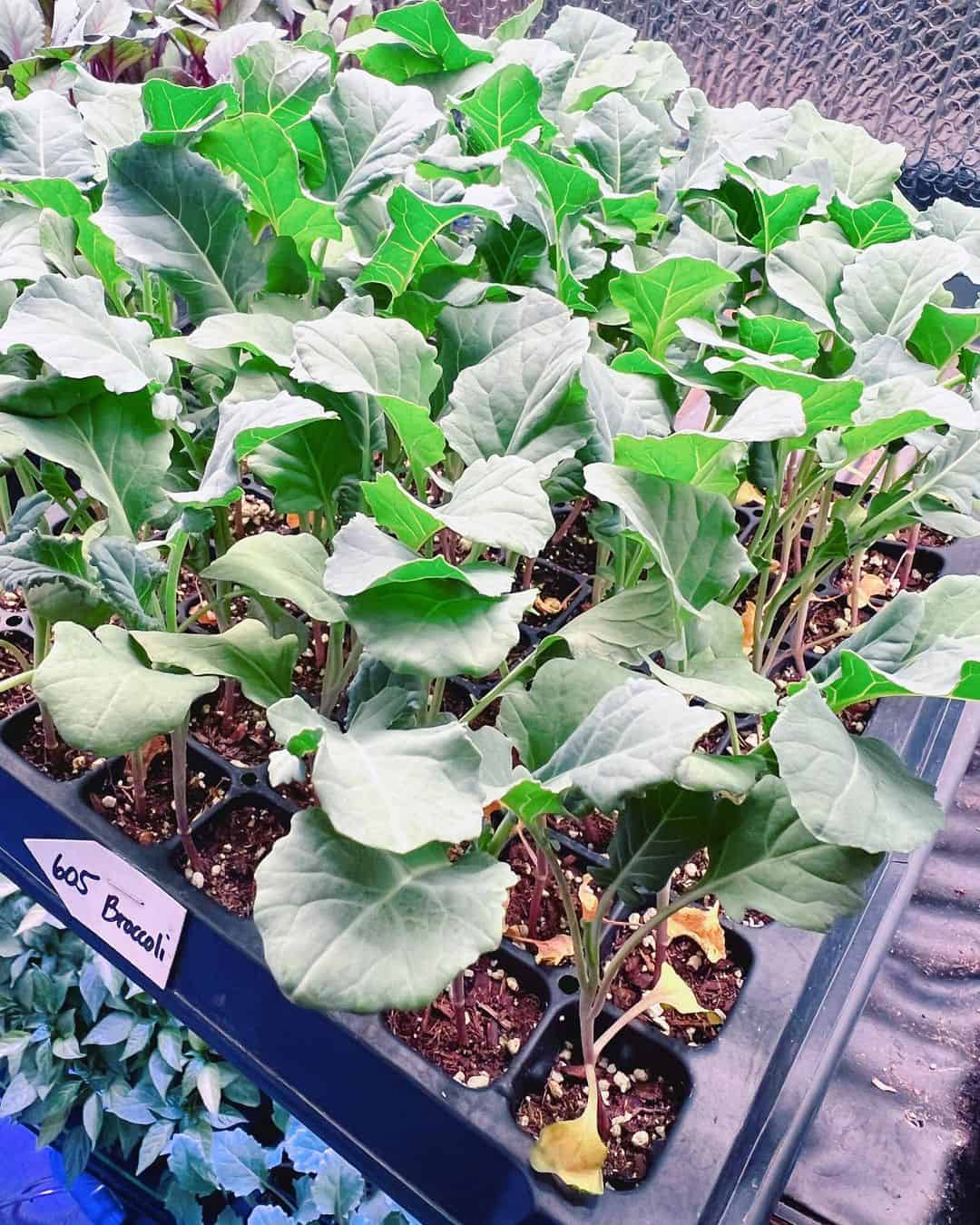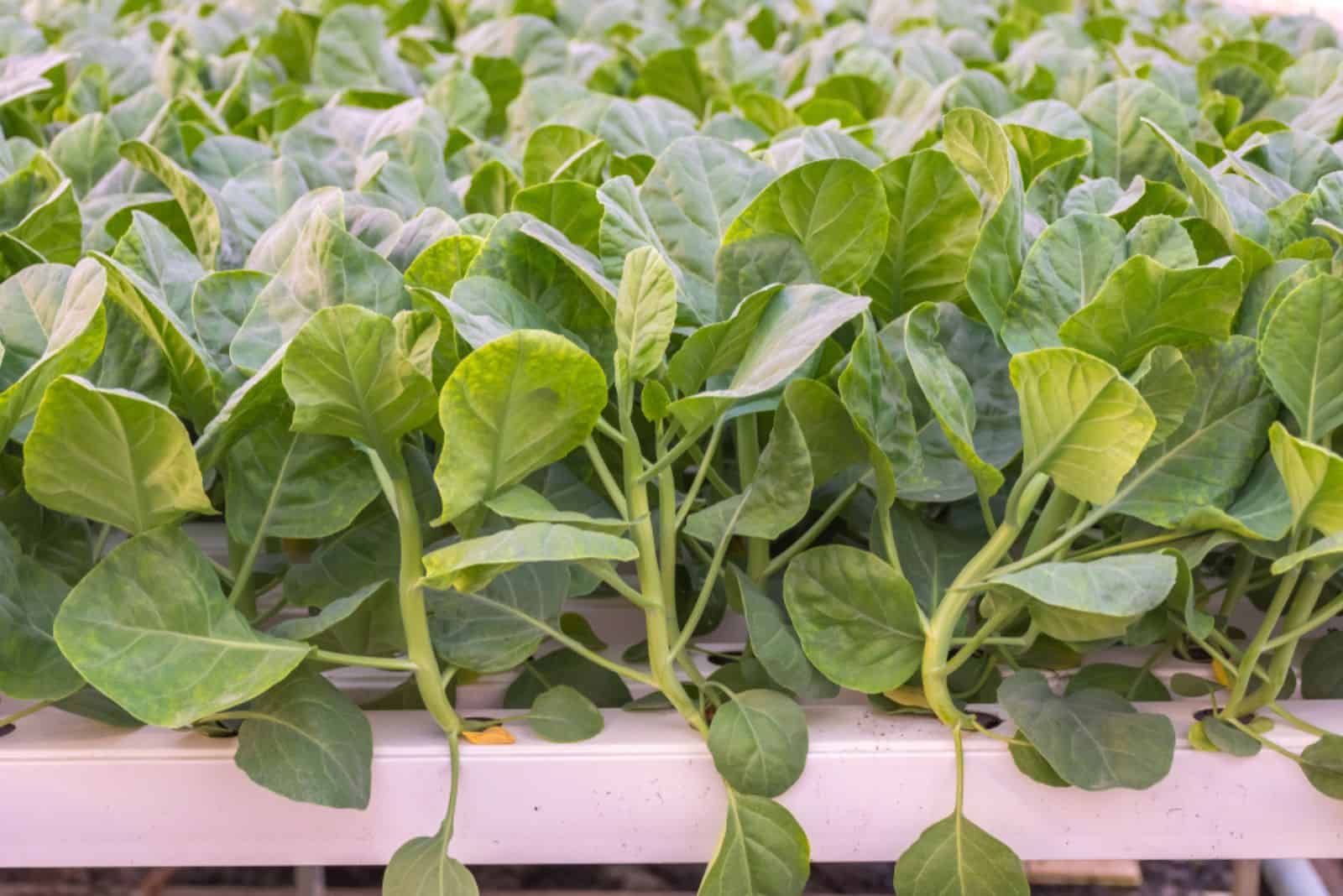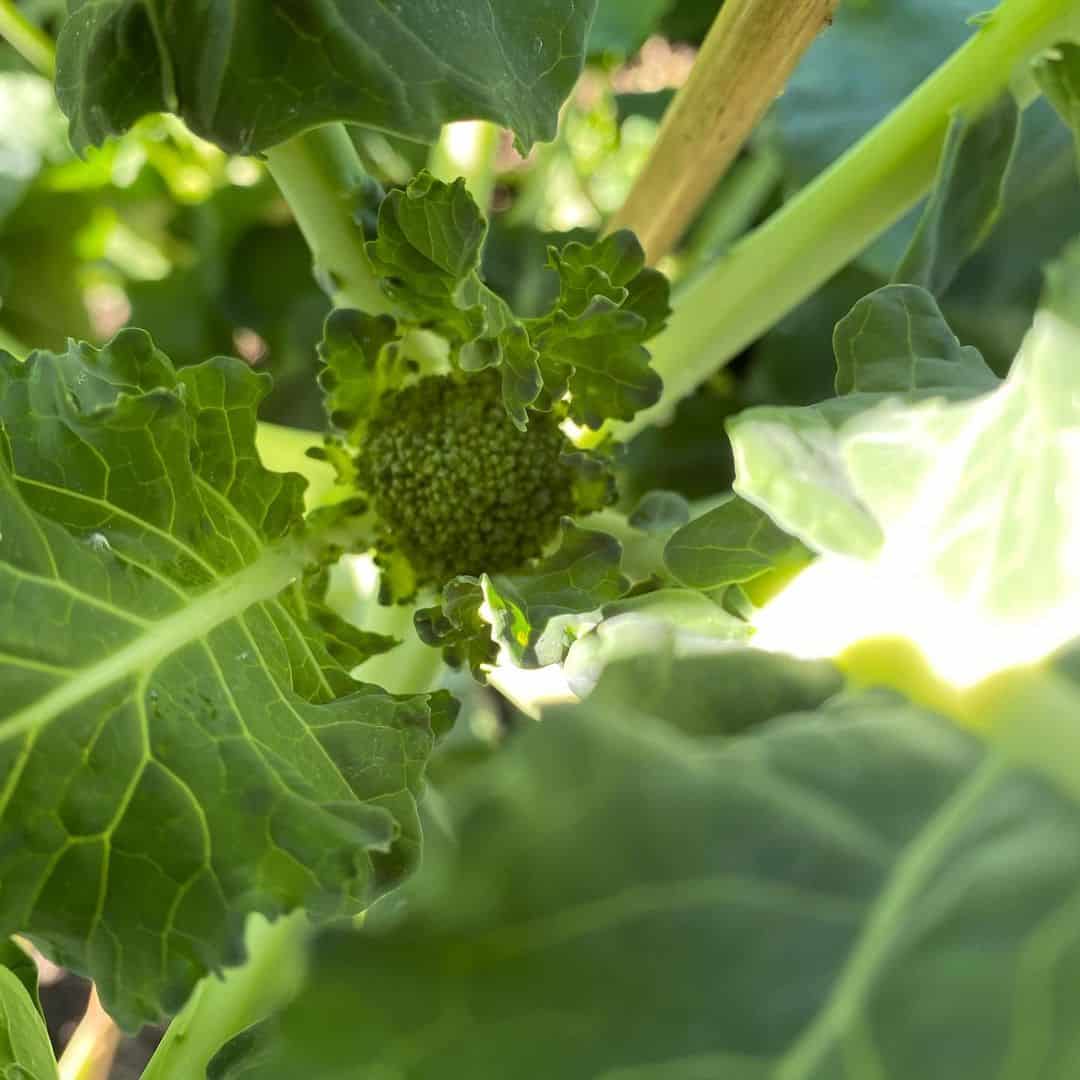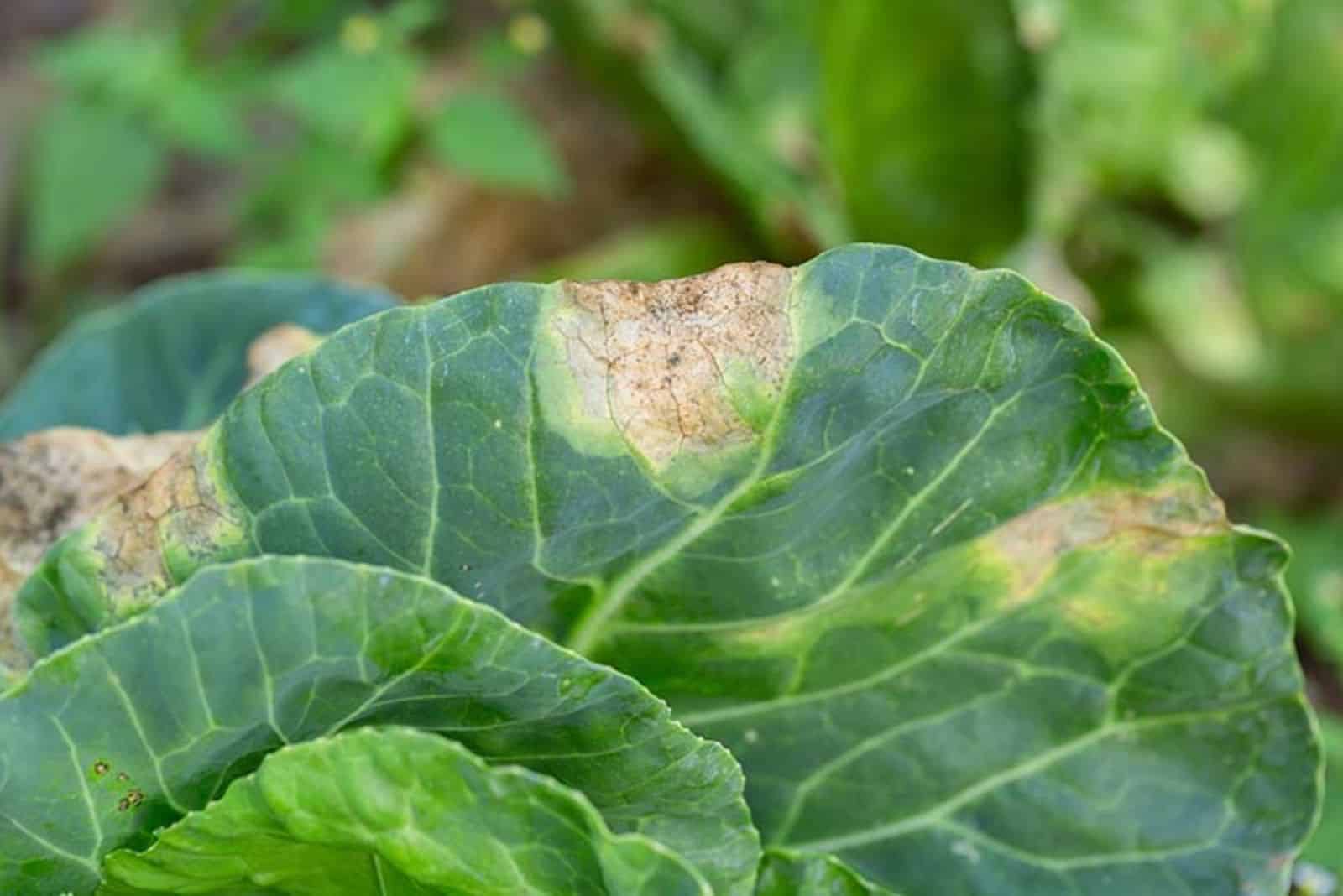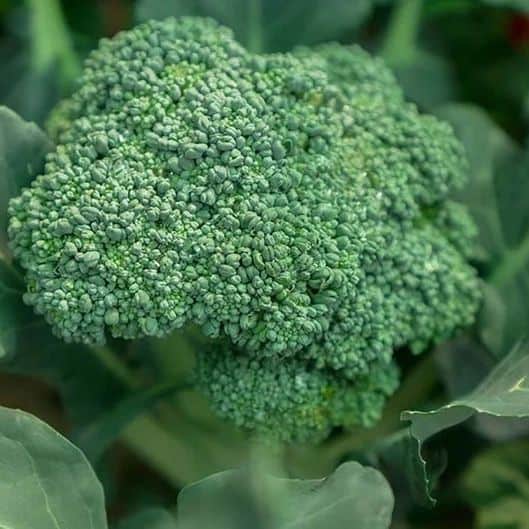Growing vegetables hydroponically has many benefits, and one of the main ones is increased yield.
That’s why we constantly look for different veggies to grow this way, starting from herbs, leafy greens, and root vegetables, and eventually moving on to flowers.
In hydroponic setups, we grow plants without a traditional potting soil. Instead, the roots of the flowers, herbs, and veggies are submerged or constantly misted with a nutrient solution that hydrates and feeds them.
Of course, since this is not a common way to grow veggies, it poses the question of how exactly we should grow hydroponic broccoli.
To help you out, we’ll bring you some top tips you need to know in order to nurture this cool-weather crop in a hydroponic system, such as choosing the right plant variety and method, starting and spacing the broccoli, and eventually caring for it.
We’ll also include some common pests and diseases that can afflict this vegetable in hydroponic setups, as well as the ways you can deal with them.
Finally, we grow broccoli for its head, which is why we’ll mention how to harvest it when grown with hydroponics.
Before we start exploring all these things, let’s learn more about broccoli itself:
[table id=652 /]
How To Grow Hydroponic Broccoli
Broccoli is a man-made vegetable, but that only means we managed to adjust it to fit our preferences. And we can say that we do a similar thing when exploring novel methods of growing them.
One such thing is using a hydroponic system instead of a traditional soil medium.
For growing broccoli hydroponically, you first need to find a suitable variety and a hydro technique, then you need to start the seeds (or you can use young plants if you have them), and think of the spacing.
When it comes to care, you need to ensure that your hydroponic broccoli is placed in full sun, slightly cooler temperatures, and that they get enough moisture and nutrients.
There is a lot to take into consideration, especially if you’re just starting out with hydroponic farming, but we’ll discuss all these steps in the sections below so that you can see how hydro growing can be easy.
Choose The Broccoli Variety
Technically, you can grow any broccoli in hydroponics, but the most common one is Calabrese, probably because its taste improves in cooler temperatures.
Other popular types include Di Cicco, Arcadia, and Blue Wind. Di Cicco has the fastest growing rate, Arcadia is resistant to various diseases, and Blue Wind has large heads that it produces over a longer period of time.
Calabrese takes a bit longer to mature than the other varieties, but its sweet taste and multiple shoots make it all worth it in the end.
Choose The Method
Once you’ve chosen the broccoli type you want to use in your hydroponic farming, it is time to make a decision about the method.
For instance, knowing about the differences between aeroponics and hydroponics will get you a long way since your broccoli will grow faster in aeroponics (once it develops its roots), but that setup is more expensive than a hydroponic one.
For instance, in aeroponics, the plant roots are misted with a nutrient-rich solution that ensures optimal oxygenation and growth, while in hydroponics, the roots are submerged in water.
However, aeroponics is generally not suitable for beginners because the setup is more complex than hydroponics.
Luckily, there are many popular hydro techniques for growing broccoli, such as deep water culture, the Kratky method, ebb-and-flow, and the nutrient film technique.
Deep Water Culture (DWC)
In this method, the broccoli roots are constantly submerged in a nutrient solution, so you won’t need a water pump to flood and drain it throughout the day.
However, you will need an air stone and an air pump to enrich the liquid with oxygen and prevent root rot.
One of the perks of this system is that it doesn’t require a lot of maintenance, so you can place your broccoli in it and then “forget” about it.
Kratky Method
One of the things that most growers love about the Kratky method is the fact that it requires very little work on their part.
All you need to do is submerge the broccoli roots in the nutrient-rich solution, and that’s it.
This passive technique doesn’t use any pumps or air stones because the water level drops as the plant develops and uses the liquid. The more solution the plant uses, the more oxygen is in the container.
When growing broccoli with this method, place your plant in a mesh container filled with an inorganic medium, such as marbles or LECA pebbles, ensure that the roots protrude from the holes, and dip them into a nutrient solution.
Ebb-And-Flow
Ebb-and-flow is probably the most popular hydroponic setup due to its simplicity, and it’s perfect for broccoli.
For this method, you place your plants in a tray that is flooded and drained with a nutrient solution multiple times throughout the day.
When the water drains, your broccoli gets oxygen (which prevents root rot), and when it floods, it takes the moisture and nutrients that sustain it.
All you need is a plastic tray (or you can build it from PVC pipes), simple pumps to control the liquids, and some sort of an inorganic medium (our favorite is LECA clay pebbles).
Nutrient Film Technique (NFT)
Another great hydro setup for growing broccoli is NFT. When setting it up, you need to support this veg with a growing medium such as pebbles or marbles since the broccoli plant is heavy.
The plant’s roots grow in a shallow nutrient solution which the pump takes from the reservoir, brings to your broccoli, and then takes back.
Unlike the DWC, which is a passive technique, NFT is active and therefore requires a bit more expertise to set up.
However, it is beneficial for the broccoli because its roots aren’t constantly submerged in the solution, and they get plenty of oxygen for optimal development.
Starting The Broccoli
There are a couple of ways to start this veg in a hydroponic setup. For instance, you can germinate broccoli seeds, propagate the stems, or buy the plants ready to be transplanted.
For seed propagation, you should plant the seeds in a coco coir or a seed-starting mixture, and once they sprout, start feeding them with a light nutrient solution.
When the seedlings become taller and have 4-5 sets of true leaves, you can transplant them to your hydroponic system. (Just remember to remove the organic medium around the roots.)
And if you want to reduce your chores, you can just get a transplant and place it into your hydro setup. Of course, these plants are more expensive than propagating the seeds or stems yourself.
Spacing The Broccoli
Optimal spacing for broccoli plants planted in the ground is between 12-20 inches, depending on the variety.
However, we shouldn’t disregard this factor when growing this veg hydroponically. In a hydro system, you should place your broccoli plants about 12-16 inches apart so that their leaves and stems can develop without any hindrance or being crowded.
Hydroponic Broccoli Care
The crucial things in hydroponic gardening for all plants include light requirements, consistent temperatures, and a proper nutrient solution.
The amount of light your plant needs is the same for hydroponic soil-grown plants, but the temperature and nutrient requirements are a bit different.
It is much harder to maintain consistent temperatures in hydro farming because the outside conditions affect it tremendously. And if you opt for outdoor hydroponics, rain, wind, and heat can affect the nutrient solution, cause temperature fluctuations, etc., all of which can stress out your broccoli.
Below, you can read more about hydroponic broccoli needs, and discover some clever ways to meet them.
Light Requirements
Broccoli plants generally thrive in full sun conditions, and if you grow them hydroponically, you can place them outside in order to save on your energy bill.
But if you prefer indoor cultivation, you can simply get grow lights and your plants will thrive.
Generally speaking, you should expose your broccoli to at least 10-12 hours of light per day. For instance, if you use LED or fluorescent lights that don’t emit too much heat, you should keep them on for about 14-16 hours per day.
Incandescent and HID lights generate too much heat and can potentially burn your plants, so you can use them for about 10-12 hours each day.
When using artificial lights for hydroponics, remember to place them about a foot away from your broccoli plants, and if they emit a lot of heat, increase that distance.
Temperature
Broccoli is a cool-weather crop, and as such, it doesn’t need too much heat. The key thing is to keep the temperatures lower than 70 degrees Fahrenheit (55-65 degrees is optimal).
If you expose this plant to too much heat, it can bolt (flower prematurely), which can affect its flavor and make it bitter.
Of course, these temperatures aren’t suitable for all the broccoli growing stages. For instance, if you wish to germinate the seeds, you’ll need higher temperatures. Once you notice sprouts developing, you can reduce it.
(Heating mats come in handy during this process, as you can simply turn them off when you wish to lower the heat.)
And if you’re having trouble with keeping the water in your hydroponic reservoir cool, you can always bury it in the ground (if you keep it outside), use a chiller, place it in shade, add ice, etc.
Nutrient Solution
Ensuring proper hydration and enough nutrients for your hydroponic veggies is crucial if you want to have a good harvest.
Therefore, you need to find the right balance that won’t burn the plant’s roots, but help it grow instead.
The good news about broccoli is that it’s not demanding in this respect, and you can feed it with balanced hydroponic fertilizers. There are some excellent fertilizers for leafy greens you can use that will have your broccoli thriving.
You should also change the nutrient-rich solution about once a week or every 10 days. If you do this, you can replenish the water every day, depending on your hydroponic system. (For instance, if you use the Kratky method, you shouldn’t do this as it could suffocate the roots.)
Finally, you should ensure that the pH value of the solution is between 6.0-6.5, and the EC (electrical conductivity) is between 2.8-3.5 to create the best conditions for optimal moisture and nutrient uptake.
Pests & Diseases
One of the things that many gardeners love about growing hydroponic broccoli is the fact that this veg isn’t as susceptible to pests as some other vegetables.
However, you should still monitor it and watch for insects such as cabbage worms and loopers and aphids.
Luckily, you can get rid of them using some commercial pesticides that are safe to use around vegetables.
The most common disease that can infect your hydroponically grown broccoli is downy mildew. You can recognize it by the yellow discoloration on the upper leaf surface. As the infection progresses, the discoloration spreads and turns brown.
You can treat this disease with special fungicides, but it’s always better to prevent it from happening.
To avoid dealing with downy mildew in the first place, try not to wet the foliage, reduce the humidity, and increase air circulation.
Harvesting Hydroponic Broccoli
Harvesting broccoli heads cultivated in hydroponics is the same as picking regular ones. Wait until they’re fully developed, which usually happens between 60-100 days, depending on the variety.
Simply cut the head close to its base (about 4-5 inches below the broccoli head), and leave the plant in the solution to develop side shoots and produce more, smaller heads over the next couple of weeks.
If you leave the main head on the plant for too long, it’ll lead to blooming broccoli. It is safe to eat, but it turns bitter after flowering so you should harvest it some time before the yellowish blossoms appear and start to open.
FAQ
How long does broccoli take to grow in hydroponics?
Broccoli plants grown in hydroponics are ready for the harvest about 60-100 days after the transplant, but it all depends on the variety you decide to grow.
And if you want to start it from seeds, then it’ll take you somewhere between 100-150 days before you can harvest the fruits of your labor.
The seeds first have to germinate (which takes about 7-14 days), and then you have to let them get strong enough to survive in a hydroponic system. (Many growers usually wait until 4-5 sets of true leaves appear before moving them.)
What are the disadvantages of growing crops hydroponically?
One of the biggest disadvantages of a hydroponic growing medium is the fact that you have to monitor it constantly and ensure that the weather conditions do not affect the temperature, pH and EC values, water levels, etc.
And even if something changes, you have to recognize it quickly and get it back to normal so that your plant can continue to develop properly.
Also, many hydroponic systems require pumps and automatic setups, which may consume a lot of energy, resulting in a large electricity bill at the end of the month.
(Of course, you can move your hydroponic system outdoors and use solar energy to save money.)
Finally, certain setups are quite costly (for instance, aeroponics), but you can always try and find cheaper methods (e.g. the Kratky method).
Final Thoughts
Growing and nurturing hydroponic broccoli isn’t as demanding as you’d think, although you do have to monitor your plants more frequently.
The best way to get a large yield involves choosing a suitable variety and hydroponic setup, starting the seeds (or preparing transplants), and moving them to the hydro system.
Then, all you need to do is ensure that your plant gets plenty of light (either full sun or artificial lights for at least 10-12 hours per day), has appropriate temperatures, and that the nutrient solution is adjusted to its needs.
This involves getting the EC and the pH values to suit the broccoli, and using hydroponic fertilizers that will support your plant’s development.
And just like all vegetables, hydroponic broccoli can also suffer from certain pest infestations and diseases, but we included solutions and preventions in the article.
Finally, the main goal of growing this vegetable in hydro setups is the harvest, so we examined the best way to do it to increase your yield.
Enjoy this delicious vegetable, and until next time!


